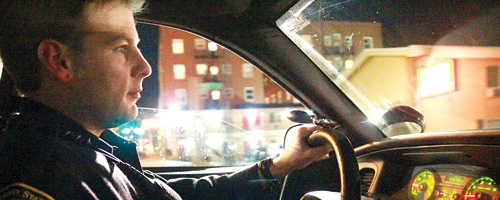Manufactured Landscapes Finding beauty in destruction and ruin is not a new idea within the art world. Artists have been exploring the link between mankind’s violent nature and the imagery it creates for a long time. Manufactured Landscapes continues within this thread, puzzling over and considering the landscapes of our new industrial age.
War, death, evironmental destruction
Manufactured Landscapes
Finding beauty in destruction and ruin is not a new idea within the art world. Artists have been exploring the link between mankind’s violent nature and the imagery it creates for a long time.
Manufactured Landscapes continues within this thread, puzzling over and considering the landscapes of our new industrial age. The film specifically follows an artist named Edward Burtynsky as he travels the world taking photographs of these new “manufactured” landscapes. Alternating between a film presentation of the subject and Burtynsky’s final photographic production, Manufactured Landscapes doesn’t have a large depth of subject matter or even dialogue. It really functions as a presentation of art-with slight windows into the subjects and the artists’ perspectives.
This film is really in all respects a beautiful piece of art. Both the photographs and filming techniques are stunningly presented. The main issue is the lack of depth. Manufactured Landscapes is like a long lecture by a particularly brilliant artist. His work is fascinating, but we want some explanation beyond just the images. Burtynsky relates some of the ideas behind his work, but in very sparing detail.
This film is for people who can deal with a slow-moving documentary that provides almost no actual “information.” The art represented and explored, however, is worthy of study, which is enough to make Manufactured Landscapes a worthwhile endeavor.
Manufactured Landscapes is playing at PIFF Sunday, Feb. 18 at 1:30 p.m., and Monday, Feb. 19 at 5:30 p.m.
Severance
Don’t be scared off the Portland International Film Festival, it isn’t all “art-house” movies. Severance, a film from Great Britain, is basically a straight-up slasher flick, until it turns into a straight-up “Russian terrorists are chasing us” flick. Either way there is a lot to love here.
The film is about an arms-dealing business’ team-building weekend that goes horribly wrong. Problem No. 1 is that they are going to a location deep in the woods. Everyone knows that this is a basically guaranteed death. Next, their driver leaves them after getting a bad omen and they start hiking through the woods. So everything is going exactly how a cliche horror movie should. Then they eat a pie with teeth in it. Not so clich퀌�, more just really strange–the pie-eating scene goes basically unexplained. At some point people start getting killed in really gruesome ways. Then the main killer is offed with a big knife and another story about crazy Russians is tacked onto the end of the film.
Here’s what I like about Severance: it’s gory, British, and features a dude with a flame-thrower. What I don’t like about Severance is the random plot attached to the end. There’s nothing wrong with making a slasher film, and despite its flaws Severance is just that.
Severance is playing at PIFF Friday, Feb. 16 at 9:15 p.m., and Saturday, Feb. 17 at 5:30 p.m.
Ahlaam
The influence of real-life forces on the production of a film isn’t always obvious. In the case of Ahlaam, the real war surrounding the filming is painfully obvious. Made right after the U.S. invasion of Iraq, the production was plagued with extreme situations. Kidnappings and the destruction of an ongoing battle formed the atmosphere in which Ahlaam was made. It is a disjointed acid-dream of Iraq, both before and after the fall of Saddam.
The narrative of the film follows a woman who was placed in a Baghdad mental hospital after Saddam’s guards took her husband away. As the movie progresses, various attacks by the United States and their relation to patients within the insane asylum are shown. Eventually, the asylum is bombed and the patients inside begin wandering the streets.
As a vivid picture of “post-war” Iraq, Ahlaam functions at an incredible level. The disjointedness and extreme pain of it all show through. It is an absolutely gritty, stinging portrait and an amazing artistic feat as well. All of that being said, if the film is separated from its surroundings, it lacks a complete feeling. The story jumps and moves in confusing ways and would benefit from tighter editing. Overall, however, Ahlaam is an achievement in perseverance that should be seen.
Ahlaam is showing at PIFF Thursday, Feb. 15 at 5:30 p.m., Friday, Feb. 16 at 9:15 p.m., and Monday, Feb. 19 at 2:30 p.m.



